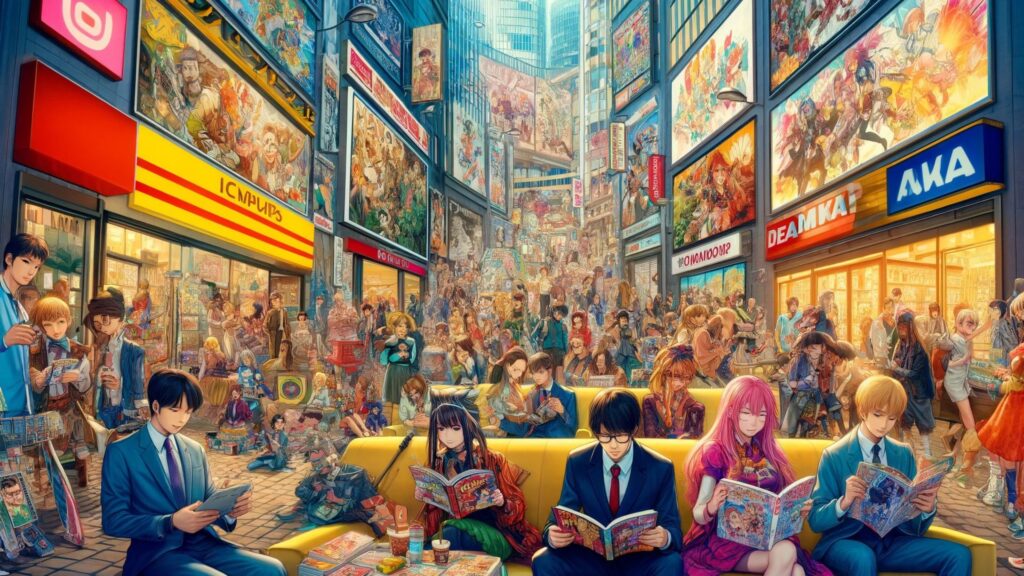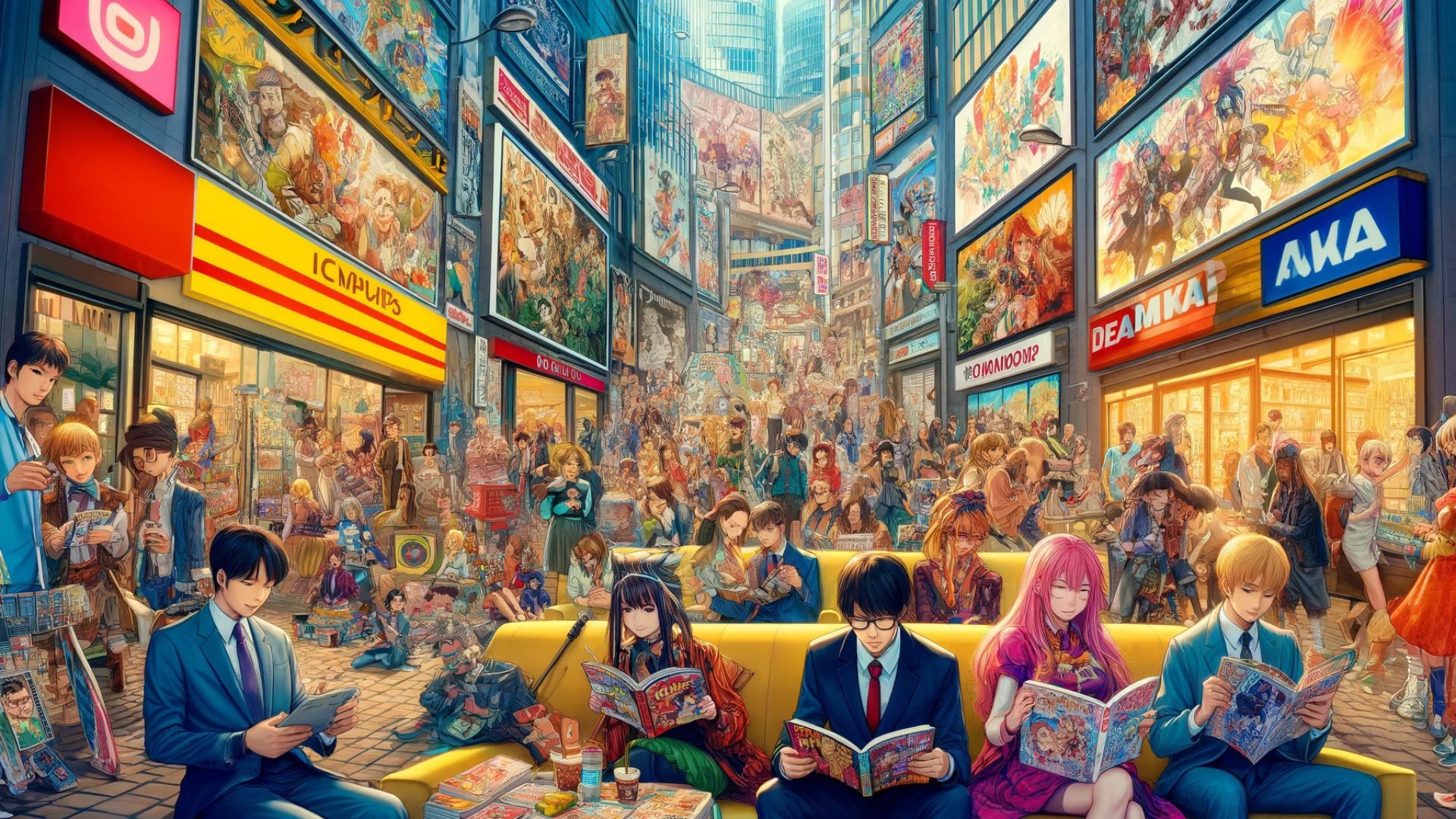Manga, the Japanese art form of graphic novels and comics, has exploded in popularity across the Western world in recent years. Once a niche interest for anime fans, manga now attracts a broad, diverse audience, from teenagers to adults, and its influence is felt in everything from fashion to pop culture. But what is it about manga that makes it so appealing to Western audiences? In this article, we’ll explore the reasons behind the meteoric rise of manga in the West, examining its storytelling techniques, unique art style, diverse genres, and the role of anime. We’ll also take a look at how the global digital revolution has contributed to manga’s accessibility and widespread appeal.

Unique Storytelling and Art Style
One of the key factors behind manga’s success in the West is its distinctive storytelling and art style. Manga has its roots in centuries-old Japanese tradition, but it has evolved into a versatile, modern medium that offers something for every type of reader.
Character-Driven Narratives
Manga often places a heavy emphasis on character development, allowing readers to become deeply invested in the characters’ emotional journeys. This focus on character-driven stories, paired with complex emotional arcs, appeals to readers who crave more nuanced, introspective storytelling.
- Example: Naruto and One Piece are two examples of manga that focus heavily on the growth and emotional challenges of their protagonists. Readers are often drawn into these series because of how relatable and multi-dimensional the characters are.
Fluid Art Style
The art style in manga is another draw for Western audiences. Manga typically features detailed, expressive illustrations with a focus on dynamic action, emotive facial expressions, and clean, minimalist panel layouts. The clean, black-and-white visuals with occasional color spreads allow the artist to convey atmosphere and emotion in a unique way.
- Example: In Attack on Titan, the clean linework and detailed backgrounds immerse the reader in a post-apocalyptic world, while the character expressions evoke the desperation and fear of the characters.
Globalization and the Rise of Anime
The global popularity of anime, particularly in the West, has greatly contributed to manga’s success. As anime became a mainstream cultural phenomenon in the 1990s and early 2000s, it helped introduce a new generation of Western audiences to Japanese comics.
The Anime Gateway
For many fans in the West, anime has acted as a gateway to manga. Once viewers fall in love with anime series, they often seek out the original manga to dive deeper into the storylines, discover new plotlines, and engage with characters that weren’t fully explored in the anime adaptations.
- Example: The anime adaptations of Dragon Ball, Naruto, Attack on Titan, and Demon Slayer have been hugely successful in the West, creating a strong fan base for the original manga versions.
Manga as a Complement to Anime
The availability of both anime and manga has allowed fans to interact with stories in multiple formats. Manga serves as an excellent complement to anime, often offering a more detailed and expansive look at the story and characters.
- Example: One Piece and Fullmetal Alchemist both have lengthy manga series that are accompanied by their anime counterparts, providing fans with a deeper experience of the worlds created in the original works.
Manga’s Accessibility in the Digital Age
In the past, it was often difficult for Western fans to access manga. However, the rise of digital platforms has drastically changed this landscape, making manga more accessible than ever before.
Digital Manga Platforms
Digital platforms such as Shonen Jump, Crunchyroll Manga, ComiXology, and VIZ Media have made manga available to a global audience in a way that traditional print publications never could. These platforms allow readers to access a wide range of manga on-demand, often at a lower price point or through subscription services, making it easier for fans to read on their own terms.
- Example: Shonen Jump offers both free and premium content, allowing fans to read current manga chapters from series like One Piece and Demon Slayer simultaneously with their Japanese releases. This real-time access has helped make manga more popular and relevant in the West.
Mobile Accessibility and E-Readers
The rise of smartphones and tablets has made reading manga even easier. Manga can now be read on the go, anytime, anywhere, which is especially appealing to younger readers who are familiar with consuming content digitally. Manga apps have streamlined the process, making it simple to download and read on mobile devices.
- Example: Popular manga apps like Manga Plus and Webtoon have a massive global user base, allowing readers to discover both popular and indie manga at their convenience.
Conclusion
Manga’s popularity in the West is no accident. The medium’s unique storytelling, diverse genres, and distinctive art style have captivated a broad audience, while its deep connection with anime and digital accessibility has made it more attainable than ever before. The growing presence of manga in global pop culture, combined with its exploration of universal themes and fresh perspectives, ensures that its influence will continue to grow in the years to come. Whether you’re an anime fan looking to explore the original source material or someone simply seeking engaging, innovative stories, manga has something to offer everyone.










